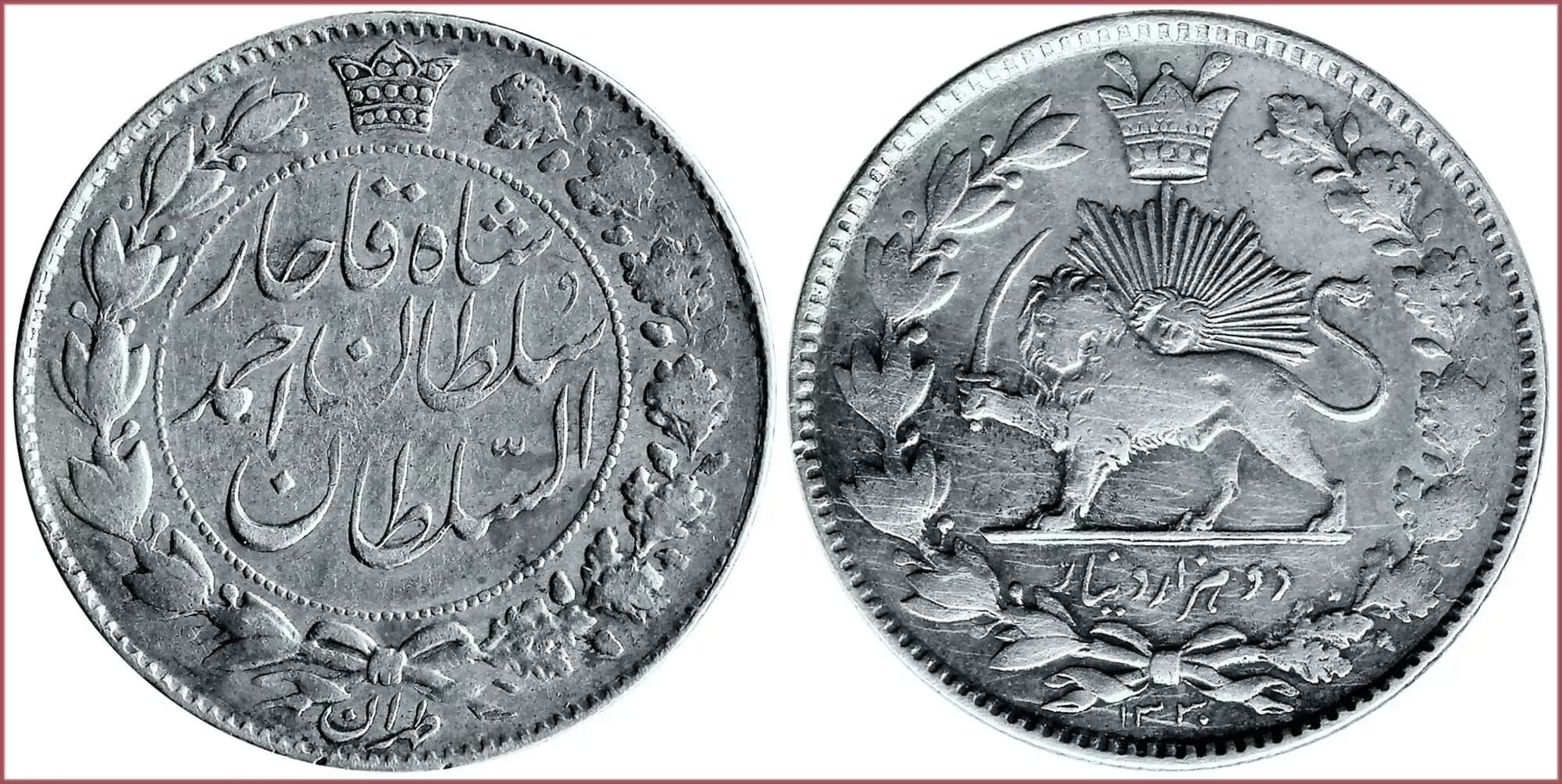QIRAN: COIN OF PERSIA
2 qirans, 1912: Sublime State of Iran (Persia)
Sublime State of Iran (Sublime State of Persia or Qajar Persia/Iran) — Iranian state during 1789-1925 ruled by the Qajar dynasty, which was of Turkic origin.
Ruler: Ahmad Shah Qajar — Shah of Persia (Iran) from 1909 to 1925, and the last ruling member of the Qajar dynasty.
AH 1330 (AH: Latin "Anno Hegirae" — "the year of the Hijra"; Islamic calendar) = 1912 (Gregorian calendar).
السّلطان سلطان احمد شاه قاجار: ruler Sultan Ahmed Shah Qajar.
طهران: Tehran.
Crowns.
دوهزار دینار: two thousand dīnār (2.000 dīnār = 2 qiran).
۱۳۳۰: 1330.
Coat of arms of Persia during 1907-1925: crowned composition a lion with a saber on the background of the rising sun.
Tehran Mint.
- Silver (0.900): 28 mm - 9.16 g
- Reference price: 21.4$
COIN QIRAN — WHERE & WHEN (coins catalog: by names & emitents)
- IRAN — Qajar Persia (19th-20th centuries): qiran = 1000 dīnār = 20 shahi
QIRAN as coin name.
Qiran or kran (Persian "قران") — historical monetary unit and silver coin of Iran (known as Persia at that time), which was minted roughly during 1825-1925.
The following ratio was valid: 1 qiran was equal to 20 shahi or 1000 dīnār. In turn, 10 qiran was 1 toman.
The first silver qirans weighed about 7 g. Several denominations were minted: ⅛, ¼, ½ and 1 qiran.
Gradually, as often happens in the history of the issue of coins by different countries and at different times, the weight of the qiran began to decrease. By the middle of the 19th century, it was about 5 grams. New denominations were added: ⅖ and 2 qirans.
At the beginning of the 20th century, thanks to the use of the newest equipment at that time, the quality of the production of Persian coins increased significantly. Another denomination has become widely used: 5 qirans.
Regarding the origin of the name of the coin...
First using qiran as a Persian coin dates back to the reign of Fath-Ali Shah Qajar. To celebrate the 30th anniversary of his kingdom (Qajar Persia), he issued coins decorated with the inscription "صاحب قرآن" ("Sahib-e-Qiran") which literary means "The Lord of the Auspicious Conjunctio" and refers to a ruler whose horoscope portends a reign of world-conquest and justice.
But according to another version, the inscription literary means "the owner of two centuries" in modern Persian (although term is nowadays used as an equivalent for a century in modern Persian and Arabic, it was considered thirty years during the Qajar era in Iran; therefore, any king whose kingdom lasted more than thirty years called himself "Sahib Qiran" equivalent to "a person who lived in two centuries").
With the passage of time, these coins, which were equal to a thousand dīnār, became known as "Sahib Qirani coins". Gradually, people dropped "Sahib" and just called it qiran.











